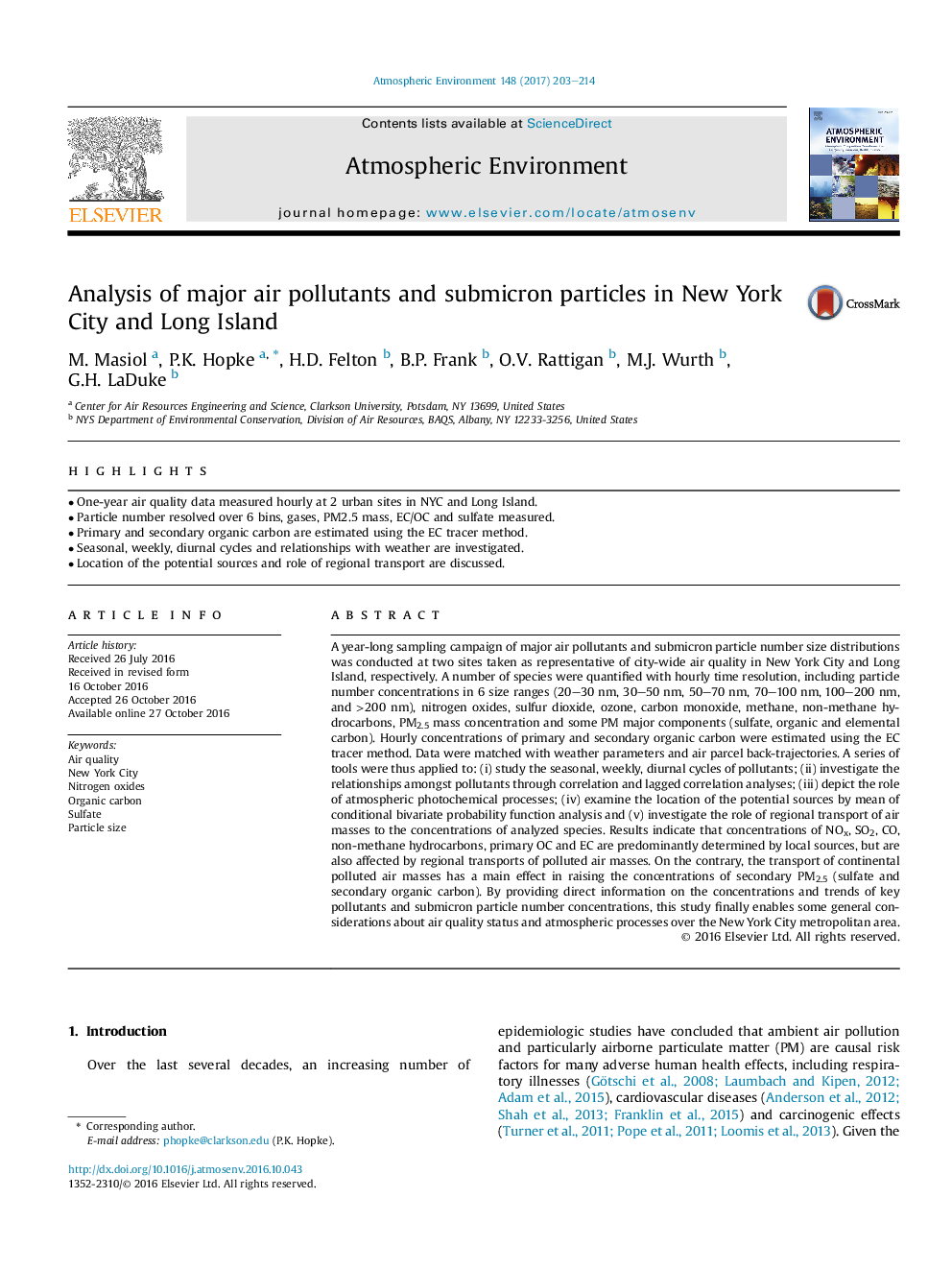| Article ID | Journal | Published Year | Pages | File Type |
|---|---|---|---|---|
| 5753507 | Atmospheric Environment | 2017 | 12 Pages |
â¢One-year air quality data measured hourly at 2 urban sites in NYC and Long Island.â¢Particle number resolved over 6 bins, gases, PM2.5 mass, EC/OC and sulfate measured.â¢Primary and secondary organic carbon are estimated using the EC tracer method.â¢Seasonal, weekly, diurnal cycles and relationships with weather are investigated.â¢Location of the potential sources and role of regional transport are discussed.
A year-long sampling campaign of major air pollutants and submicron particle number size distributions was conducted at two sites taken as representative of city-wide air quality in New York City and Long Island, respectively. A number of species were quantified with hourly time resolution, including particle number concentrations in 6 size ranges (20-30Â nm, 30-50Â nm, 50-70Â nm, 70-100Â nm, 100-200Â nm, and >200Â nm), nitrogen oxides, sulfur dioxide, ozone, carbon monoxide, methane, non-methane hydrocarbons, PM2.5 mass concentration and some PM major components (sulfate, organic and elemental carbon). Hourly concentrations of primary and secondary organic carbon were estimated using the EC tracer method. Data were matched with weather parameters and air parcel back-trajectories. A series of tools were thus applied to: (i) study the seasonal, weekly, diurnal cycles of pollutants; (ii) investigate the relationships amongst pollutants through correlation and lagged correlation analyses; (iii) depict the role of atmospheric photochemical processes; (iv) examine the location of the potential sources by mean of conditional bivariate probability function analysis and (v) investigate the role of regional transport of air masses to the concentrations of analyzed species. Results indicate that concentrations of NOx, SO2, CO, non-methane hydrocarbons, primary OC and EC are predominantly determined by local sources, but are also affected by regional transports of polluted air masses. On the contrary, the transport of continental polluted air masses has a main effect in raising the concentrations of secondary PM2.5 (sulfate and secondary organic carbon). By providing direct information on the concentrations and trends of key pollutants and submicron particle number concentrations, this study finally enables some general considerations about air quality status and atmospheric processes over the New York City metropolitan area.
